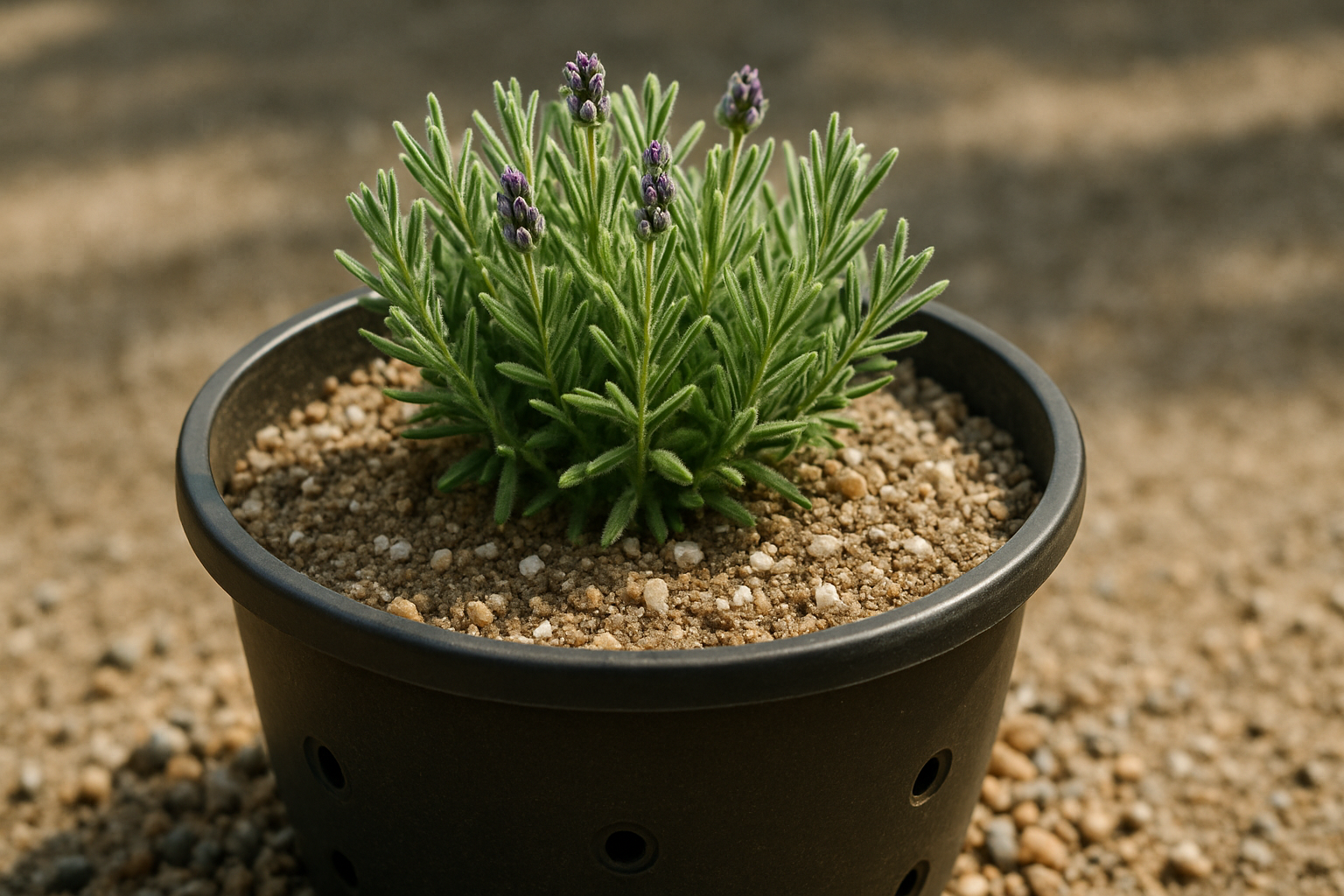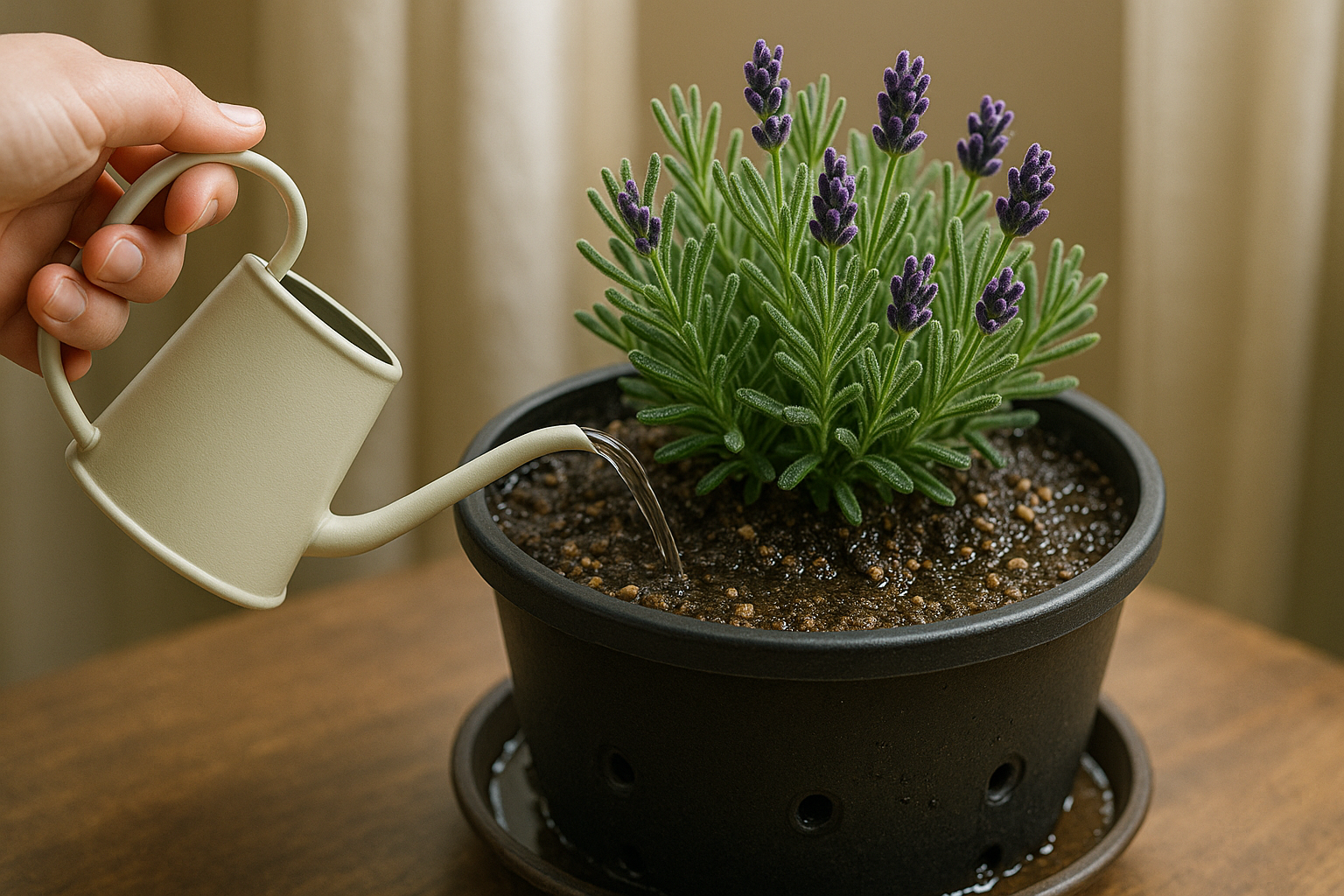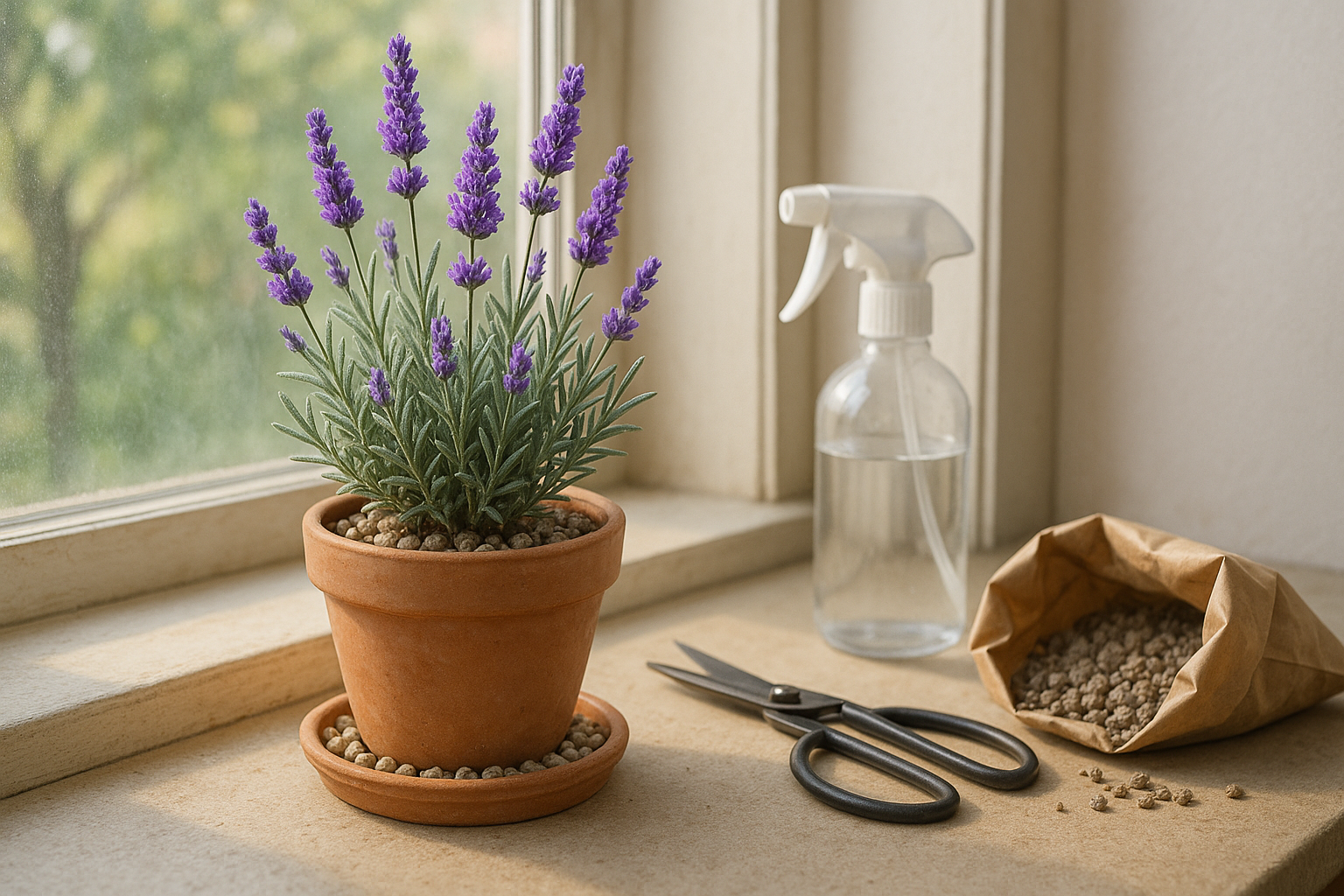Can You Grow Lavender Indoors?

Yes, you can absolutely grow lavender indoors, though it does come with its own set of challenges and rewards. While lavender is typically associated with sunny outdoor gardens, it can thrive inside if you’re prepared to meet its needs.
One of the major rewards is filling your home with a fresh, calming fragrance that doubles as a natural air freshener. Lavender is also believed to help purify indoor air and boost your mood. The vibrant purple blooms and soft, silvery foliage bring a lovely pop of color, making any sunny windowsill or shelf more inviting.
To succeed, focus on four key conditions:
- Make sure your plant gets plenty of light—ideally 6-8 hours of direct sun daily. A south-facing window is best, or consider supplementing with a grow light if natural light is limited.
- Use a well-draining potting mix—think sandy or gritty soil, not regular potting soil—to mimic lavender’s natural Mediterranean environment.
- Choose a container with drainage holes to prevent soggy roots, which can quickly kill your plant.
- Water the plant thoroughly but only when the top inch of soil feels dry, as overwatering is a common mistake.
Finally, rotate your pot regularly so all sides get sunlight, and trim spent flowers to encourage more blooms. With a bit of attention and the right setup, you’ll find indoor lavender just as rewarding as its garden-grown counterparts.
Choosing the Right Lavender Variety
When it comes to growing lavender indoors, picking the right variety can make all the difference in your success. Not all lavenders are created equal—some thrive outdoors and quickly outgrow containers, while others are perfectly adapted for life inside your home.
English lavender (Lavandula angustifolia) and French lavender (Lavandula dentata) are two top picks for indoor cultivation due to their compact growth habits and ability to tolerate container conditions. Within these groups, look for dwarf or compact varieties like ‘Munstead’ or ‘Little Lady’, which generally stay under 18 inches tall and won’t overwhelm your pots or windowsills.
These smaller plants are ideal because they allow ample airflow around the leaves and reduce the risk of overcrowding and mildew.
When selecting your plant at the nursery, choose one with healthy deep green foliage, resilient stems, and no signs of pests or wilting. If you prefer starting from seeds, be aware that germination can take time—opt for fresh, high-quality seeds and use well-draining soil to prevent root rot. Whenever possible, buy from reputable suppliers to ensure disease-free plants.
Always avoid varieties labeled as “giant” or those meant specifically for the landscape, as their vigorous growth can quickly overpower indoor spaces. By focusing on compact cultivars and healthy starts, you’ll set yourself up for years of fragrant, low-maintenance indoor lavender enjoyment.
Ideal Pots and Soil for Indoor Lavender
Choosing the right pot and soil setup is vital for healthy indoor lavender. Start by selecting a pot that’s at least 12 inches in diameter to give roots plenty of space to spread and stay aerated. Drainage is non-negotiable—lavender hates sitting in water—so make sure your container has large drainage holes at the bottom.
Terracotta pots are a favorite among lavender growers because their porous material wicks excess moisture away from the soil, mimicking the plant’s natural Mediterranean habitat and preventing root rot. While plastic pots can work, they hold moisture longer and are best used only if you’re especially careful not to overwater.
Choosing the Right Soil
When it comes to soil, aim for a well-draining, gritty mix; lavender thrives in sandy or rocky soils that don’t retain too much water. The ideal pH range is slightly alkaline, between 6.7 and 7.3. An easy homemade mix includes equal parts cactus potting mix and coarse sand or perlite, or simply pick up a store-bought succulent or cactus mix for convenience.
Never use rich garden soil or standard potting mixes unless you amend them with grit or perlite—these retain too much moisture.
Additional Care Tips
- Place the pot somewhere with excellent airflow, like near a sunny window that opens. This helps the soil dry quickly and reduces the risk of fungal disease.
- Elevate the pot slightly on pot feet or pebbles to allow water to escape freely, avoiding soggy roots.
By focusing on drainage and dryness, and picking the right materials, your indoor lavender has the best shot at thriving and filling your space with its soothing fragrance.
Light and Temperature Needs Indoors
Lavender thrives indoors when it receives plenty of sunlight and stable temperatures. Aim to provide your plant with at least 6 to 8 hours of direct sunlight each day, making a south-facing window the ideal spot for most homes in the northern hemisphere. If your home’s natural light is limited, especially in winter, consider using a full-spectrum LED grow light positioned just a few inches above the plant to mimic bright, sunny conditions for at least half the day.
Keeping your lavender on a windowsill or near bright doors can help, but be mindful of drafts that might make the area too chilly. Lavender prefers daytime temperatures between 65°F and 75°F (18°C to 24°C), with a nighttime drop to around 60°F (15°C) being fine. Just avoid sudden temperature fluctuations or cold spots near uninsulated glass.
Since lavender loves dry air, regular indoor humidity levels (around 40%) suit it well. However, watch out for very damp rooms, such as bathrooms or kitchens, which can encourage fungal problems. As sunlight shifts with the seasons, you may need to move your lavender to a sunnier room or rotate the pot regularly to ensure even growth and keep stems upright.
In winter, moving your plant away from cold drafts or closer to interior walls can help it stay warm. With some simple adjustments and a little observation, you can keep your indoor lavender not just surviving, but thriving year-round.
Watering & Feeding Lavender in Pots

Watering lavender in pots requires a gentle, careful approach to avoid root rot—a common issue with this fragrant herb. The golden rule is to let the top inch of soil dry out between waterings. Stick your finger into the soil up to the first knuckle; if it feels dry, it’s time to water. Always use a pot with drainage holes and water thoroughly, allowing excess moisture to drain away instead of sitting at the bottom.
Avoid letting lavender sit in a saucer of water for long periods, as soggy roots quickly lead to rot. Signs of overwatering include yellowing leaves, wilting despite moist soil, or a musty smell—all hints that it’s time to back off the water. Underwatering, on the other hand, will cause the leaves to curl, turn gray, or drop off.
Indoors, lavender thrives on lean soil, so fertilizing should be minimal—feed only once in the spring with a balanced, slow-release fertilizer, or use a low-nitrogen blend labeled for Mediterranean or flowering plants. Avoid overfertilizing, as this can stress your lavender and lead to leggy growth with fewer blooms.
Real-world tip: If you’re unsure about watering, it’s safer to err on the dry side—lavender prefers drought over overly wet soil. For the healthiest plants, rotate your pot every week to ensure even sun exposure and check regularly that the soil drains well. This simple routine can make all the difference in keeping indoor potted lavender strong, fragrant, and bloom-ready year-round.
Pruning, Maintenance & Common Problems
Regular pruning and deadheading are essential for keeping your indoor plants healthy and looking their best. Use clean, sharp scissors to trim away any yellowing, damaged, or dead leaves at their base—this prevents energy waste and encourages new growth. For flowering plants, deadhead spent blooms by snipping just below the flower head; this signals the plant to produce more buds.
Always prune in the morning when plants are well hydrated, and avoid removing more than a third of the plant at once to prevent shock.
Improving Airflow
Poor airflow is a common indoor issue that can lead to fungal diseases and pests like spider mites or aphids. To improve air circulation:
- Space plants apart
- Occasionally open windows
- Consider using a small fan
If you notice sticky residue, webbing, or discolored leaves, act quickly: quarantine the plant, wipe leaves with soapy water, and apply neem oil if needed.
Watering and Drainage
Waterlogged soil or poor drainage can cause yellow leaves or leaf drop. To avoid this:
- Make sure pots have drainage holes
- Let the top inch of soil dry out before watering
- Avoid drafts or sudden temperature changes
Encouraging Blooms
If your plant isn’t blooming, check the light levels—most flowering varieties need bright but indirect sunlight. Supplement with a balanced, water-soluble fertilizer every few weeks during the growing season.
Regularly inspect your plants for signs of trouble so you can address small issues before they become bigger problems. Don’t hesitate to adjust your care routine as you learn what works best for each plant in your space.
Enjoying & Using Your Indoor Lavender
Harvesting indoor lavender is a rewarding process that lets you enjoy its beauty and benefits year-round. For drying, snip flower stems just as the buds begin to open—tie them in small bunches and hang them upside down in a cool, dry spot out of direct sunlight.
Dried lavender is perfect for homemade crafts like sachets, bouquets, or wreaths, adding a lovely touch to gifts and décor. If you love to cook, pick a few fresh sprigs to infuse syrups, baked goods, or even lemonade; always use culinary varieties for safety and flavor.
To keep your plant attractive and productive, trim back spent stems and faded blooms regularly, and pinch back leaves if it starts to grow leggy or unruly. Consistent light, moderate watering, and the occasional turn of the pot help lavender grow evenly—try placing your pot in different sunny spots to see where it thrives the most.
Each home is different, so don’t be afraid to adjust your care routine; noticing how your plant responds will help you create the best growing environment. Mixing up your placement and pruning schedule offers both a fun experiment and the opportunity to enjoy fresh lavender for many seasons.
